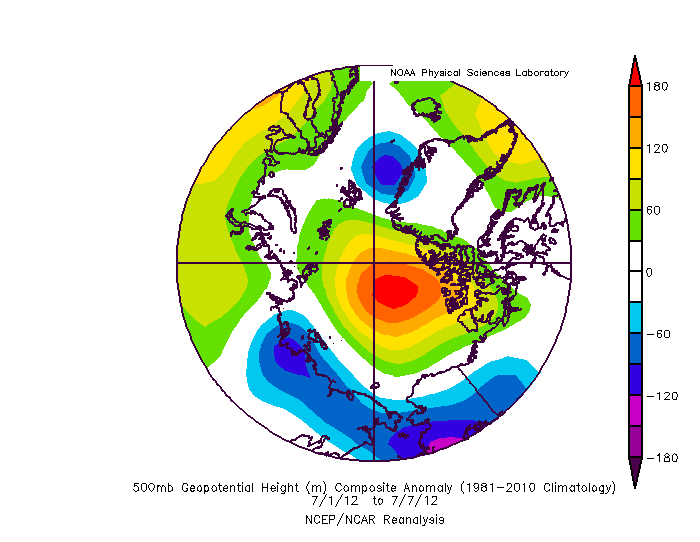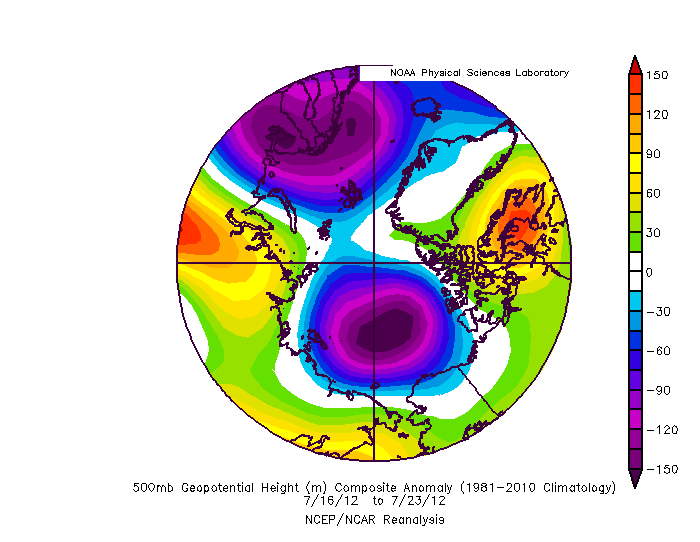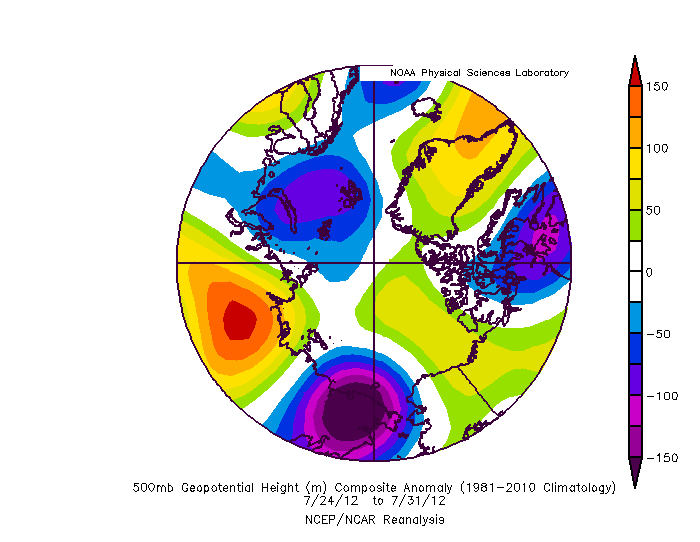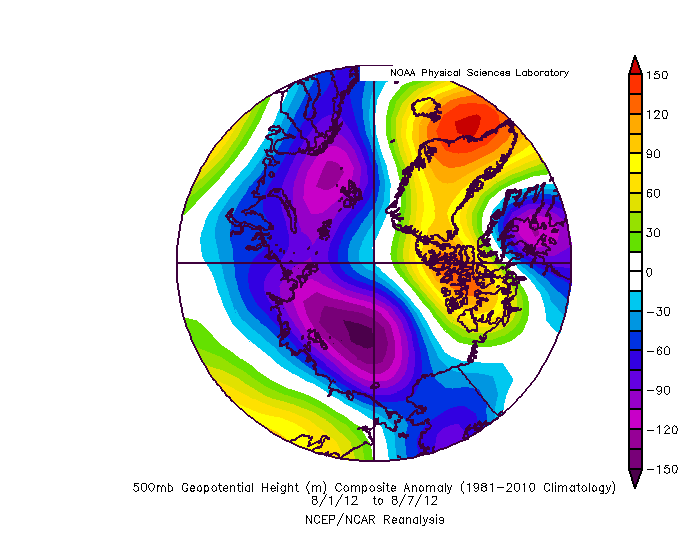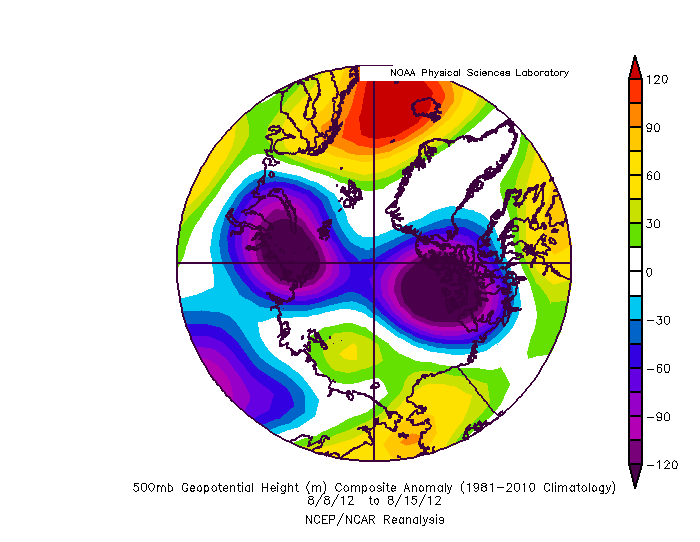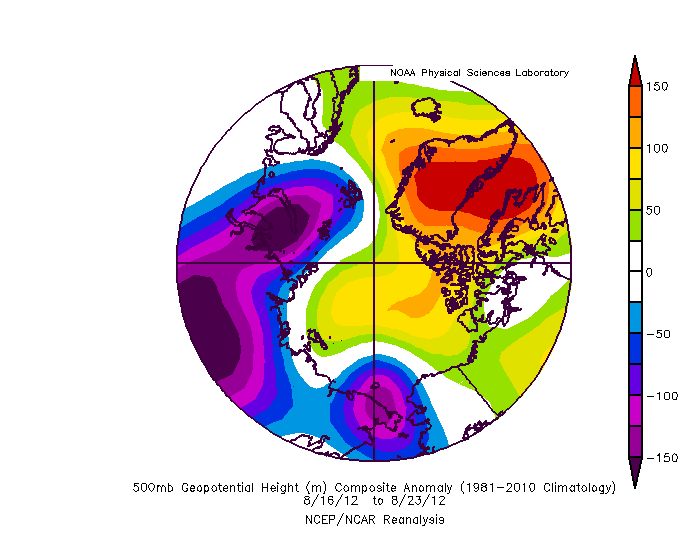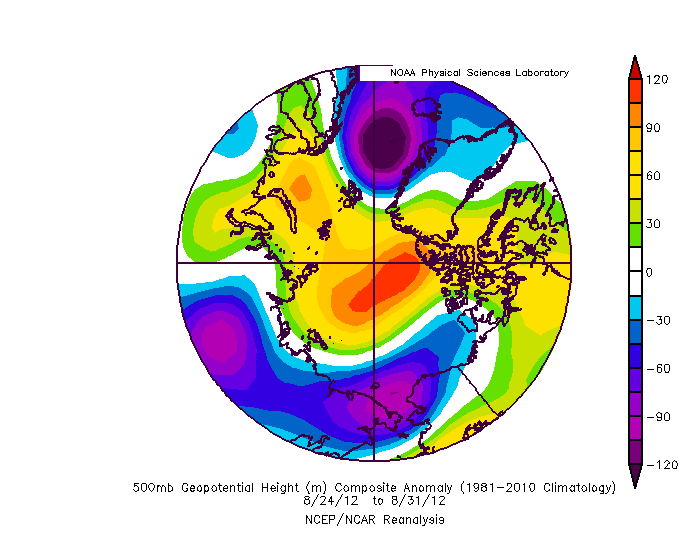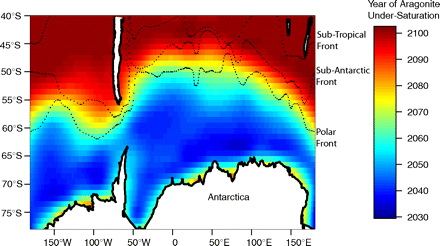-
Posts
5,573 -
Joined
-
Last visited
Content Type
Profiles
Blogs
Forums
American Weather
Media Demo
Store
Gallery
Everything posted by csnavywx
-

Phoenix Records its Hottest Summer on Record
csnavywx replied to donsutherland1's topic in Climate Change
Bingo. This is the heart of it right here. I am keenly interested in the reply. Oh, and no goalpost moving. You're free to change your mind based on evidence, as any good scientist should, but not the goalposts. -
Yeah, the Chukchi just dropped off a cliff. Now sitting about 350 above 2012 for extent, tied on area and probably lower volume than 2012, given how hard the CAB was whacked.
-
That's the North Pole now. As the article states, mush up through 88N and that's what's at the pole. Safe to say that the MYI and thicker ice didn't make it through the melt season unscathed. CAB and the thickest ice took the biggest hit this year. It will be interesting to see what CryoSat shows this fall.
-
-
https://www.awi.de/en/about-us/service/press/press-release/mosaic-expedition-reaches-the-north-pole.html
-
Not much attention is paid to long-term morbidities that will spring from the virus (and in some cases, already are) that could run into the millions or tens of millions. Only focusing on the death count is a myopic view of the situation, imo.
-
Amazing how it's only mid-July and there's virtually nothing left in the Laptev and only scraps in the ESS. The open water front is now in the CAB in record time and with some quality insolation time left on the clock. EPS/GEFS suggest this nuclear blocking pattern is finally backing off, but there are hints that it may be a temporary reprieve if the idea of a more NA centered blocking event past D5/D6 is correct. If that sets up into another event, this year will likely kill off 2012's record. Threre isn't enough peripheral ice left to keep the CAB from taking the brunt, except on the Beaufort side (which is actually doing better than any time since 2013). Having said that, we should see some slowdown in extent losses after D2/D3 for a while. The pack is already pretty compressed, so some dispersion is probably inevitable with the incoming lows. I'm thinking there's a legit chance of clear open water at the pole this year. We've had a couple of years where it came close, but nothing with the start on the Eurasian side like this year has had.
-
Big dipole to start the month, relaxed a few days later and then a monster Greenland ridge centered around the 12th. That pattern relaxed into a strong +PV for a while with a weaker dipole event to end the month. GAC strikes at the end of the first week of August and by that point is able to sweep away most of the low-extent ice. Overall the first half is dominated by storminess, with a return to Greenland ridging and a dipole-like pattern to finish the month. Most of the damage is done with the early June and early July dipole events (with the mid-July Greenland ridge pattern no doubt helping export).
-
-
2020 now lowest for both extent and area. The pack has been getting absolutely hammered for the past week -- pretty much everywhere. There's still some area/extent left in the Hudson (moreso than most recent years), so 2020 could build up a pretty sizeable lead over the next week or two, which would put it in position to be competitive with 2012's turbo August melt. The hole that is being blown open on the Laptev/ESS side is getting big and getting big early. The difference has been that the Beaufort and Chukchi look to be in halfway decent shape right now. We'll have to see if any of that can survive, but the experience of the post-2007 years has been for most of that to melt out.
-
I suspected that whopping May dipole did more damage than was originally appreciated. The timing was just close enough to the solstice for sun angle to really matter and there was clearly some deterioration in the snow pack when it did cross. Perhaps more importantly, it destroyed the tropospheric low-level cold pool that is typically still present at that time of year. With the sun angle already high, it could not regenerate through clear-sky longwave radiation, only mainly through recirculation and diabatic processes. Surface temps never did fall/recover after that, despite some decent +PV action afterwards. We're now seeing ponding cover virtually the entire basin, with no "safe spots" like we've seen the past few years, where melt would start later. Also unlike past years, the strongest area drops recently have been driven by melting and losses the basin proper and not on the periphery, which is actually higher this time around. In fact, the only thing keeping this above 2012 right now are the peripheral areas, which have been running above the 2010s average lately. Much like that year, the rot is widespread and no real snowcover remains. There's more ice in the Beaufort/Chukchi, but even favorable recent years have seen that melt out rapidly in late July and early August, so I don't expect that to survive. Combined with the very poor state of the pack on the Eurasian side of the Arctic (which has been absolutely hammered this year), we do have a real shot at the record. Of course, a strong sustained +PV pattern can always swoop in and save it.
-
EOSDIS Worldview looking 2012-ish with the very widespread melt ponding on virtually the entire basin. CAB/CAA are being especially hard hit. Cross-posting this video from Neven's forum of a video uploaded by GAWLab at Alert:
-
Incidentally, this isn't the first setup like that this year. The one in January that produced a forced line of low-topped showers had a somewhat similar evolution (CAA and dry slotting aloft with some surface heating). It lacked the more beefy mid-level CAPE or it would have produced a similar result wrt wind damage.
-
Normally with that much shear and low cape, updrafts are simply tilted and sheared out of existence before they can do much. Yesterday was different. The total amount of cape was low (~500J/kg), but it was very low topped (around 450-500mb top, around -20 to -25C, just cold enough for charge separation and lightning) and concentrated. A more "normal" sounding with a higher top would've resulted in values 2-3x that large. That didn't matter in this case. The amount of instability was concentrated vertically and parcel acceleration was large enough to balance the shear somewhat and thus these shallower, but stronger updrafts could tap into the extremely high ambient helicity.
-
Should have a few more days of big gains from the remnant open water area in the Laptev, then a marked slowing as the Pacific side OHC remains high and the weather pattern turns hostile for growth.
-
Yeah, the transition time from supersaturated to undersaturated is very short, on the order of ~20 years and every one of those papers focuses on the 2030s as the onset date. 450ppm seems to be the threshold. It starts small in areal extent and depth, but once onset begins, it takes very little time to overtake virtually the entire Southern Ocean in wintertime and begins to encroach on mid-latitude waters with rather alarming speed. I can't imagine that's going to be good for some species (as the authors rightly point out). It also kind of forms a pincer, in that, species will be migrating towards the poles as acidification migrates towards the equator, putting the squeeze on species adaption.
-
You can always use Sci-hub! Chances are your taxes were used to fund the research anyways. (This paper has the following comment listed in acknowledgements: We acknowledge support from the National Science Foundation Ocean AcidificationProgram (OCE-1314209). This is IPRC publication no. 1152 and SOEST publicationno. 9508. )
-
Additional paper: https://www.nature.com/articles/nclimate2844
-
https://www.eurekalert.org/pub_releases/2019-03/uoaf-soa031119.php This is just concerning the appearance of a widespread undersaturation horizon near/in the mixed layer in the next 20 years or so. https://www.pnas.org/content/105/48/18860 It's an older paper, but we are very closely following the emissions scenario used (IS92a), so these dates probably aren't far off. Once aragonite undersaturation appears at the surface, it takes just 20-30 years for it to encompass basically entire Southern Ocean south of 50-60S. If we screw around long enough, by near the end of the century, that will spread towards the tropics and then calcite undersaturation will appear in the Southern Ocean. Once calcite is knocked out, you can kiss most shelled creatures goodbye. The thresholds for this seem to be at ~450 and ~650ppm. We're rapidly coming up on the first one.
-
I'm still reading through that paper. From what I've read so far, the change is on the order of 0.25 pH post-impact. We've had around 0.15 of change so far, but this hasn't eaten into the aragonite buffer enough to cause undersaturation at the surface or in the mixed layer in most locales so far. That is due to change sometime in the 2030s in the Southern Ocean and the waters next to Antarctica (where colder SSTs allow more gas to dissolve). From there it will spread rapidly across seasons and area. It's not talked about much and my suspicion is that it won't be until that starts to occur.
-
Looks like the ESS and Laptev are finally starting to freeze from both sides. That usually results in a quick jump in extent numbers as two ice fronts develop temporarily. Once that's done (by first or second week of Nov), the Pacific side will be the place to watch. Lots of heat to bleed off in the Chukchi and western Beaufort seas. Depending on how the weather goes, those might not freeze over until the new year. The southern Chukchi has a chance of not completely freezing over at all or only for a brief period in Jan-Mar. The warm water there is particularly deep this year.
-
And a frost free period of 85 days. Remarkable. One wonders what that's doing to the permafrost this year. Last few years the situation further south (near Fairbanks) has been bad enough that the active layer isn't completely refreezing during the winter, creating a layer of permanent thaw sandwiched in between. A situation which wasn't expected until quite a bit later in the century.
-
Nuclear would be significantly cheaper than trying to build out massive storage systems. While daily storage seems like a solvable problem in the medium term, seasonal storage does not. Baseload nuclear takes care of that pretty neatly and much sooner. Part of the reason solar and wind are so cheap is that they displace generation only at the margin and are at relatively low penetration. Once you get past a certain penetration (I believe 10-15% for solar atm), it becomes significantly more expensive because of the aforementioned intermittency problem. Wind is even worse, because (at least here in the US), climo wind peaks are in November and March, not exactly the time of year where you need power the most. As part of a legit climate plan, I'd be up for subsidizing and standardizing nuclear in a hurry. Build a bunch of standardized current-gen reactors and work on getting a standardized design for 20-30 years from now. It's probably the fastest way to bring emissions down. And we need speed -- the hour is late. We seem to be screaming along at 2.5-3ppm/yr, which is putting us dangerously close to a RCP 6.0-8.5 scenario through mid-century.
-
It looks cool over the central CAB the next few days at least -- before that small low gets nearly smashed into oblivion by the developing blocks and wave break over the Npac. The strong push of warm advection from the Russian side will keep this year in contention next week.



.thumb.jpg.aa9ff7a62a6a7e487c8f9438bee858b3.jpg)
.thumb.jpg.7e9f14f305990a0372bf1ccecc1dd9da.jpg)
